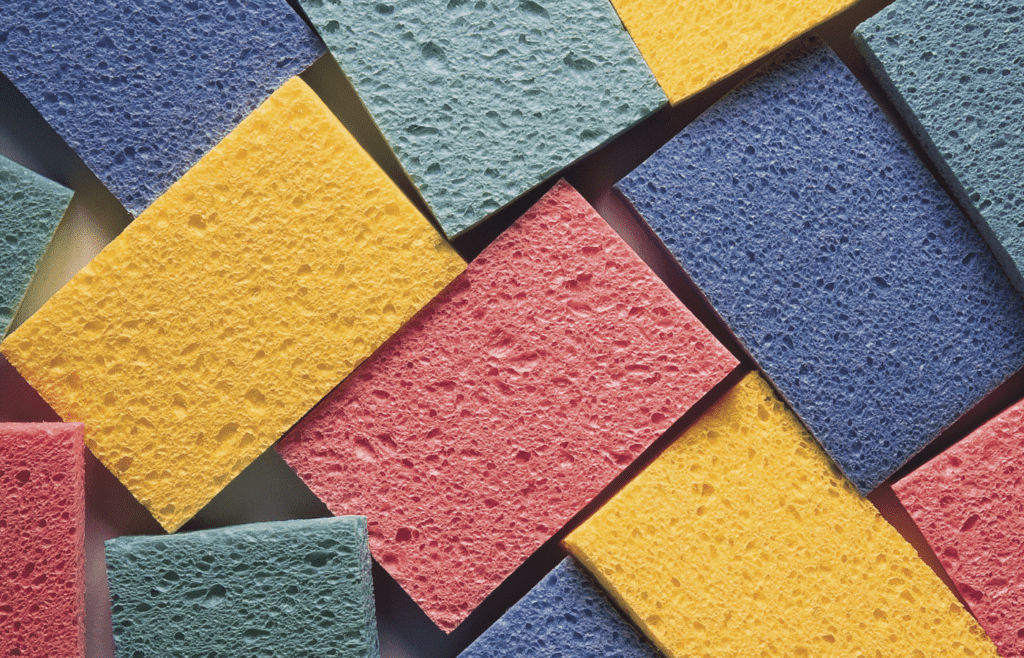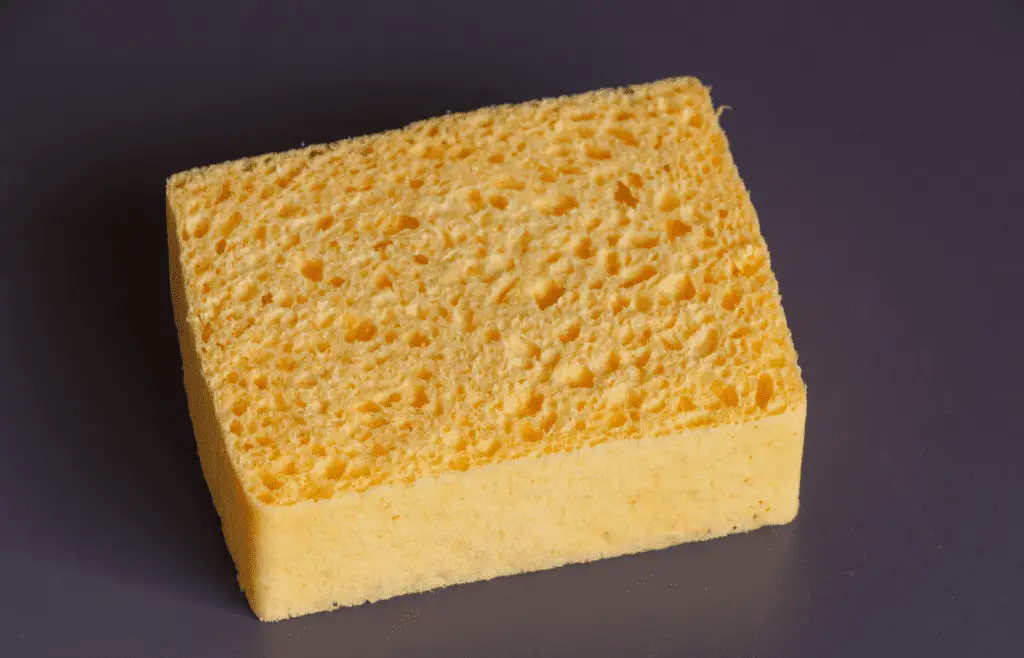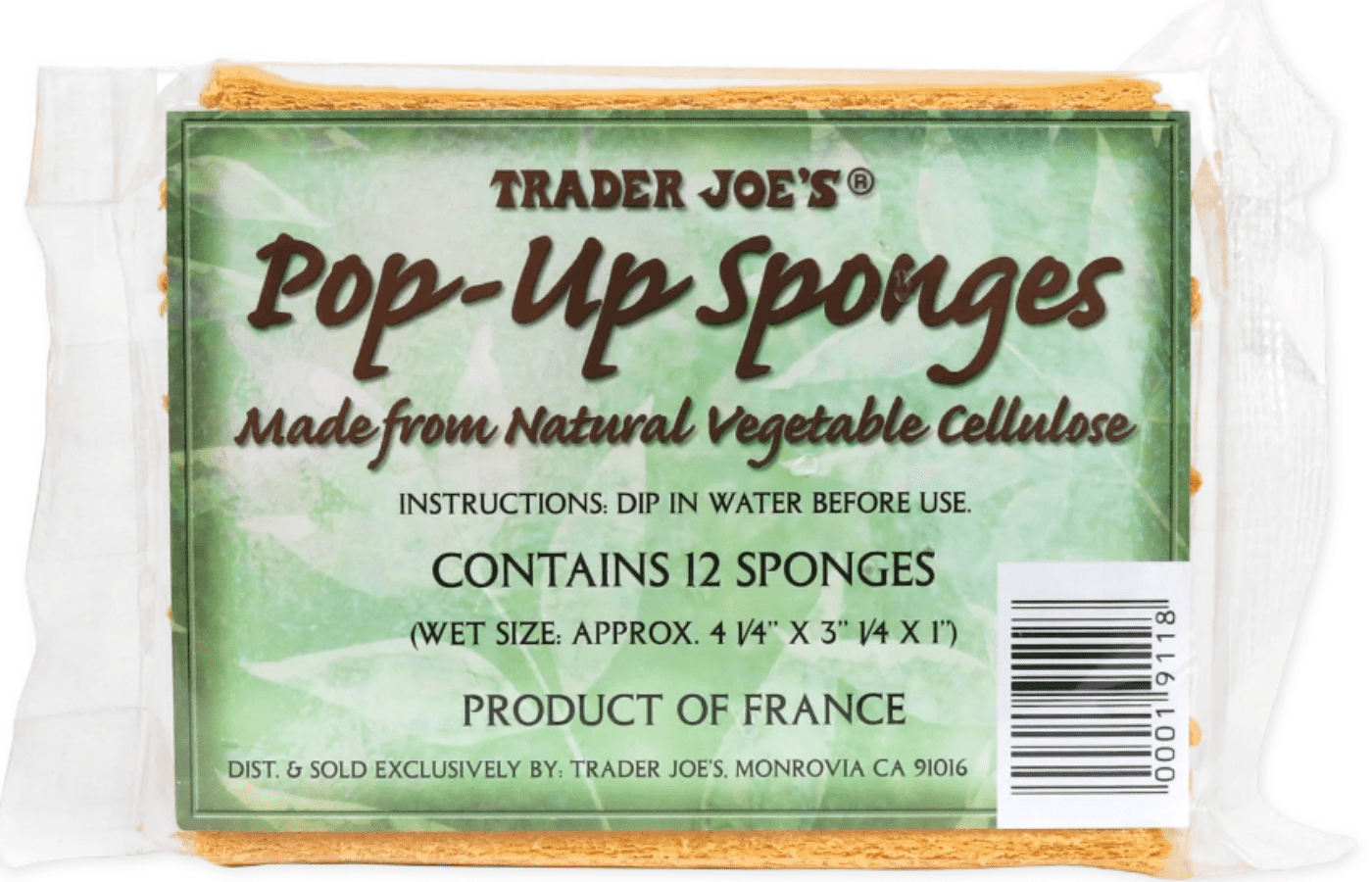Trader Joe’s is well known for its low prices, and its dedication to high quality service and fresh, organic food. But how does that translate to non-food items like sponges and other items in terms of sustainability?
Trader Joe’s sponges – at least the brand name pop-up sponges – are made of 100 percent cellulose, which makes them not only reusable, but biodegradable and even compostable.
For more about Trader Joe’s sponges and how you can use them, read on.
Can I Compost Trader Joe’s Sponges?
Trader Joe’s pop-up sponges are definitely compostable. When you feel like you can no longer use them for washing dishes, simply clip them into smaller pieces and deposit them in your compost bin.
Why Clip the Sponges into Smaller Pieces?
Smaller pieces will degrade faster and become compost sooner.
What Are Trader Joe’s Sponges Made Of?
Trader Joe’s sponges are made of 100 percent vegetable cellulose. These are materials like cotton fibers or wood pulp.
These are a natural biodegradable material that breaks down easily into compost.
To check the current price and availability of Trader Joe’s Pop-Up Sponges, click here to view the listing on Amazon.
Are Compostable Sponges Good For The Environment?
Compostable sponges, like other forms of compost, are considered very good for the environment. They naturally break down into components with plenty of nutrients for the soil.
Compostable sponges have an added benefit – a well used sponge will bring nutrients and biomatter from all the dishes it’s washed to the compost heap along with it.
Can Biodegradable Sponges be Composted?
Sponges that are fully biodegradable can usually be composted, but not always. Only biodegradable sponges made of naturally organic materials are fully compostable.
Is There a Difference Between Biodegradable and Compostable?
Biodegradable means it breaks down in the environment.
Compostable means it breaks down into organic materials to form nutrient rich soil components.
Biodegradable sponges may still break down, but not necessarily into components that should be added to your soil.
Are Biodegradable Sponges Good for the Environment?
Many of them, particularly compostable ones like Trader Joe’s, which are made of plant matter, are good for the environment. However, biodegradable sponges that are not compostable are not always good for the ground.
Some biodegradable materials can take years to break down, and some of them produce components that are harmful for the environment.
Are All Kinds of Sponges Compostable?

Not all sponges are compostable like the ones at Trader Joe’s. Standard kitchen sponges, like the yellow foam ones for example, are not compostable.
Attempting to compost sponges that are not made of natural components can result in release of toxins into the air or the soil.
What Kinds Of Sponges Are Not Compostable?
Sponges that are not compostable are:
– Fully Synthetic sponges
– Foam sponges
– Sponges made with any type of polyurethane
– Sponges with petrochemical additives
– Some forms of microfiber sponges
What Kinds Of Sponges Are Definitely Compostable?
Any sponge made out of plant matter. This includes:
– Trader Joe’s Cellulose sponges
– Bamboo Sponges
– Coconut Fiber Sponges
– Wood pulp sponges
– Some forms of microfiber sponges
How Do I Know If A Sponge Is Compostable?
Checking the packaging will give you some ideas. The best way to tell is to identify the components the sponge is made of.
Most compostable sponges are made of easy to recognize components, with few if any chemical components.
How Long Does It Take For a Synthetic Sponge to Decompose?
Depending on the type of material, it can take as many as several hundred years for a synthetic sponge to decompose.
Even biodegradable sponges can take as long as 60 years to decompose to any significant degree.
Synthetic sponges usually have petroleum based products and chemicals. These chemicals and substances don’t tend to break down in the environment.
Because of that, they can last for centuries, even if they’re in poor condition when they are tossed aside.
Why Would Biodegradable Sponges Take So Long to Decompose?
Some biodegradable materials are longer lasting than others, and take longer to break down.
Others contain partial amounts of non-biodegradable substances to enhance their durability. These may last longer than the typical 50 – 60 years.
How Long Does It Take Compostable Sponges to Decompose?

Compostable sponges generally break down within a year or so. The natural fibers return to their original state, and continue to decompose from there into nutrients for the soil.
Does the Shorter Decomposition Time Make Compostable Sponges Less Durable?
It may seem like the environmentally friendly composition might result in a less durable sponge.
That’s not always true. It depends on the quality and type of material.
Trader Joe’s pop-up sponges, for example, are supposed to last anywhere from 1 to 6 months, depending on the level of wear and use they receive, and how often they’re cleaned.
A pack of 12 can last as long as 6 years, with appropriate care.
How Do I Make My Compostable Sponges Last?
There are steps you can take to make sure your sponges last longer, before you consign them to the compost heap.
– Be sure to clean them regularly.
– Soak off heavy grime before applying the sponge.
– Scrape dishes before you scrub them
What Sponges Are Biodegradable?
Compostable sponges are all automatically biodegradable, though the reverse is not always true. Examples of biodegradable sponges include:
– Cellulose sponges (compostable)
– Microfiber (sometimes compostable)
– Organic Cloth-based sponges (usually compostable)
– Wood fiber based sponges (compostable)
– Eco Sponges (most types)
– Natural Sea Sponges
– Any sponge with a certain percentage of natural fibers and components.
What Are the Benefits of Biodegradable and Compostable Sponges?
Oftentimes, organic, biodegradable, and compostable sponges are somewhat more expensive than other alternatives, like simple foam sponges. So what benefits are there?
– More environmentally sustainable
– Fibers are often not as harsh on dishes, leading to less abrasion damage
– Less chance of chemical contamination
– Easier to recycle and reuse, which can lead to a longer use life.
– Can be added to your composting or recycled straight into the garden when it’s outlived its use as a sponge
– Potential for less allergens or other adverse health components for sensitive individuals.
Are There Downsides to Compostable or Biodegradable Sponges?
Aside from the cost, what are the downsides to compostable or biodegradable sponges? There are a few.
– May cause issues for those with allergies to certain natural components.
– Have to be sure it’s compostable/biodegradable
– Proper disposal is required, you can’t just throw it away.
– Some forms of biodegradable or compostable sponges may be less durable.
Final Thoughts:
Trader Joe’s sponges are a 100 percent cellulose, fully biodegradable and compostable product, perfect for the environmentally conscious.
And while eight dollars might seem like a high price, they’re actually a fairly good deal, with 12 sponges to a package, each one intended to last for a month or more.
Best of all, when your sponge ceases to serve well as a sponge, you don’t have to simply trash it. Cut it apart and toss it in the compost bin, and in a few months, your used sponge will become the perfect addition to your garden soil.


